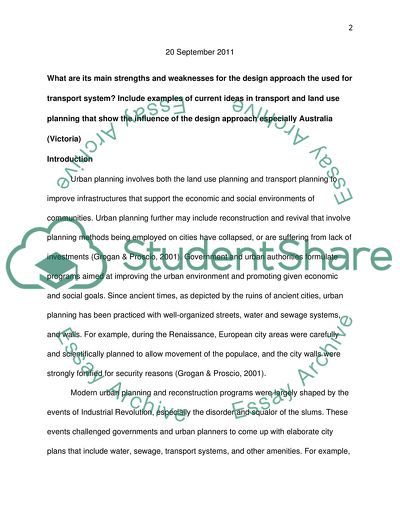Cite this document
(Strengths and Weaknesses Urban Planning in Australia Essay, n.d.)
Strengths and Weaknesses Urban Planning in Australia Essay. https://studentshare.org/architecture/1756765-what-are-its-main-strengths-and-weaknesses-for-the-design-approach-the-used-for-transport-system-include-examples-of-current-ideas-in-transport-and-land-use-planning-that-show-the-influence-of-the-design-approach-especially-australia-victoria
Strengths and Weaknesses Urban Planning in Australia Essay. https://studentshare.org/architecture/1756765-what-are-its-main-strengths-and-weaknesses-for-the-design-approach-the-used-for-transport-system-include-examples-of-current-ideas-in-transport-and-land-use-planning-that-show-the-influence-of-the-design-approach-especially-australia-victoria
(Strengths and Weaknesses Urban Planning in Australia Essay)
Strengths and Weaknesses Urban Planning in Australia Essay. https://studentshare.org/architecture/1756765-what-are-its-main-strengths-and-weaknesses-for-the-design-approach-the-used-for-transport-system-include-examples-of-current-ideas-in-transport-and-land-use-planning-that-show-the-influence-of-the-design-approach-especially-australia-victoria.
Strengths and Weaknesses Urban Planning in Australia Essay. https://studentshare.org/architecture/1756765-what-are-its-main-strengths-and-weaknesses-for-the-design-approach-the-used-for-transport-system-include-examples-of-current-ideas-in-transport-and-land-use-planning-that-show-the-influence-of-the-design-approach-especially-australia-victoria.
“Strengths and Weaknesses Urban Planning in Australia Essay”. https://studentshare.org/architecture/1756765-what-are-its-main-strengths-and-weaknesses-for-the-design-approach-the-used-for-transport-system-include-examples-of-current-ideas-in-transport-and-land-use-planning-that-show-the-influence-of-the-design-approach-especially-australia-victoria.


